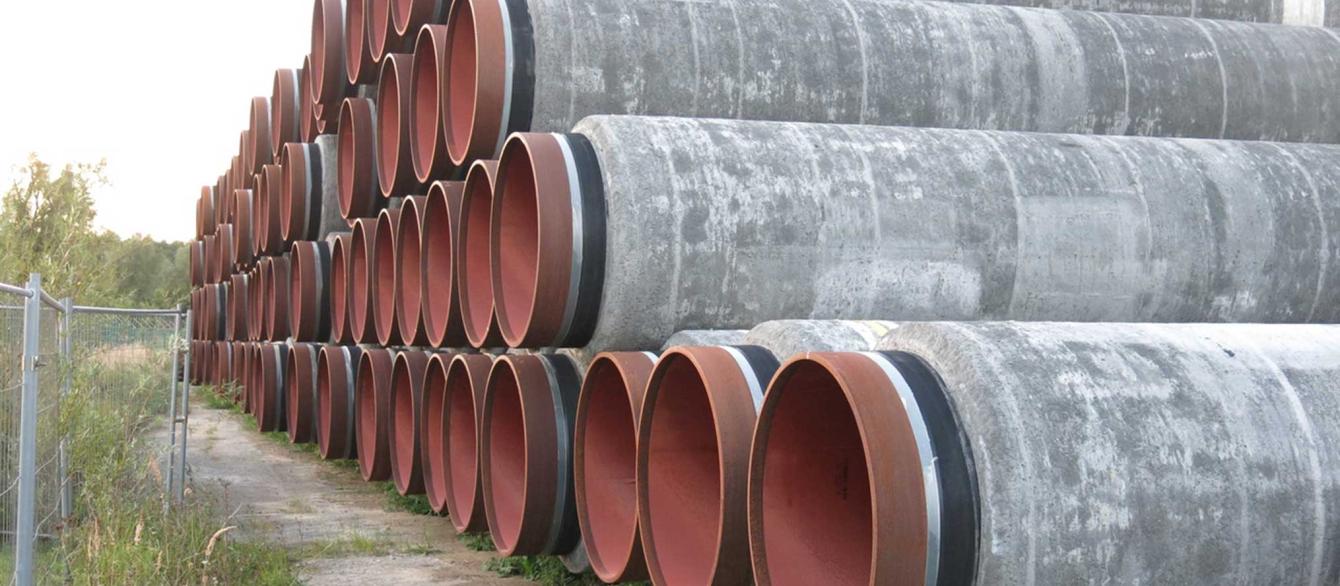The recent announcement that the United States, Russia, and Germany had reached an agreement on the completion of Nord Stream 2 reflects—however else one feels about it—a spectacular feat of negotiation. This success can be understood as the successful application of the principles of “3-D negotiation” that put an end to the controversy generated by the stalled pipeline project—at least for now.
Just how many barriers the deal faced is reflected in the awkward and even apologetic tone of the joint press statement released by the United States and Germany as they struggle to allay the worries of the deal’s many domestic and international opponents. Nord Stream 2 would enable the transport of natural gas directly from Russia to Germany through the Baltic Sea, bypassing traditional transit routes, especially through Ukraine. Until May, the company responsible for the pipeline’s construction was on the U.S. sanctions list. Critics are concerned that Nord Stream 2 could increase Europe’s reliance on Russian natural gas, and that Russia has a propensity to use its energy exports as a political tool.
Beyond that, Nord Stream 2 risks compromising $2 billion per year in transit fees to Ukraine, as well as hundreds of millions to several EU countries. It is therefore perceived by some as neglecting these partner countries in service to Germany’s own interest in acquiring cheap natural gas.
Negotiation setup involves approaching the right actors in the right sequence to ensure the right expectations have been set before anyone even sits down at the final negotiating table.
For the United States, aside from seeking to repair the transatlantic relationship damaged during the previous administration and de-escalating Russia-West tensions, the benefits from reversing Washington’s stance on Nord Stream 2 are also unclear. Despite endorsing the deal, Biden administration officials have sometimes justified it only with a kind of sighing fatalism: the pipeline was going to be constructed anyway, so they were “making the best of a bad hand.” Throw in broader concerns about increased reliance on nonrenewable energy sources and it is remarkable that the deal was achieved at all. So, why was it?
Much of the credit goes to the negotiation strategy of the German government, reflecting a textbook application of Lax and Sebenius’ conception of 3-D Negotiation. Knowing that negotiation at the table is only one of the dimensions of reaching a lasting agreement, Chancellor Angela Merkel made a visit to the White House to secure the cooperation of senior American leadership, expertly “setting up” the official negotiations that took place in mid-July, and securing a more favorable position for her talks with domestic critics and European allies. If the Americans dropped their resistance, wouldn’t it be reasonable for other Nord Stream 2 critics to look into different options as well, rather than asking for an all-out cancellation of the project?
Negotiation setup involves approaching the right actors in the right sequence to ensure the right expectations have been set before anyone even sits down at the final negotiating table. Beyond proper setup (3D) and negotiation at the table (1D), the final dimension of 3-D negotiation strategy involves creative thinking in deal design (2D) to ensure that the deal not only creates value for the negotiator, but is also lasting and sustainable.
No deal on the completion of Nord Stream 2 was ever going to please Ukraine or the German Greens, the likely new coalition partner of Merkel’s party after the upcoming fall elections. But in light of the deal’s commitments to invest in green energy in Ukraine and across Europe, as well as the retained threat of sanctions if Russia abuses its new leverage, no one can say that Ukrainian or environmental concerns were not taken into account.
But are these substantial changes or marginal concessions? Germany promised it would “utilize all available leverage” to compel Russia to extend its transit agreement with Ukraine by ten years, and Berlin and Washington are also offering Ukraine a $1 billion green energy fund, to which Germany will contribute $175 million. However, considering the tremendous economic benefit of Nord Stream 2 to Germany, these sacrifices seem marginal. The Nord Stream 2 agreement is as such a display in using clever deal design to extract maximum value while preventing opponents from portraying it as merely a values-free economic agreement between Russia and Germany.
3-D negotiation involves moving past the simpler negotiation mindsets of both win-lose and win-win. Not everyone can always be fully satisfied. The expert negotiator knows how essential it is to expand the “Zone of Possible Agreement” (ZOPA) in complex multi-party, multi-issue negotiations.
By linking green investments and German support for Ukraine with a trajectory towards the completion of Nord Stream 2, the German government has expanded the ZOPA. Key stakeholders are not fully satisfied, but not furiously opposed. And when the German Greens negotiate their coalition treaty with Merkel’s party after the Chancellor has left office, they are now less likely to kill the pipeline than they were a couple of months ago.






